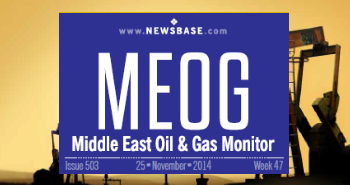Iran kicks off production at Azar’s first phase
Iran’s Oil Industries Engineering and Construction Co. (OIEC) this week announced that it has achieved full production capacity at the Azar oilfield following delays in its completion.
Following several updates in recent months from OIEC, phase one appears to have been stuck at 97% completion. In the announcement, the company’s managing director, Gholamreza Manouchehri, said that production had reached the first phase’s target level of 65,000 barrels per day (bpd) of oil despite the project remaining 97% complete, noting that it would be inaugurated ‘soon’.
He said that issues with the asset’s geology “had made the development of this field very difficult, and international companies that had previously done the exploration work in this field believed that only they would be able to develop this field.”
However, Manouchehri added: “domestic companies took over the development of the field, and both financing and implementation were successfully done by capable Iranian companies.”
In early January, he said that to date, total investment in Azar had reached $1.72bn from the National Iranian Oil Co. (NIOC) and a consortium of OIEC and Ahdaf Finance Co. since they took control of the asset in September 2011.
Meanwhile, in October 2020, Petroleum Engineering and Development Co.’s (PEDEC) manager for Azar, Keyvan Yarahmadi, said that cumulative output from Azar had reached more than 30mn barrels, adding that completion would follow shortly, at which point the asset will be fully operational. PEDEC oversees the development of the field on behalf of the project partners.
With all the talk of completing phase one, it is worth noting that production began at Azar in February 2017 at 15,000 bpd. In 2019, output averaged 31,000 bpd. This early production phase has included the drilling of nine wells and the laying of 129 km of pipelines. Output is transported by pipeline to processing facilities at Dehloran oilfield.
Azar is located in the onshore Anaran block, which covers 3,500 square km. It was discovered in April 2000 following the block’s award to Norsk Hydro in the 1998 licensing round. It holds an estimated 2.5bn barrels of oil in place (OIP), with combined recoverable oil and gas reserves estimated at 425-475mn barrels.
Azar’s crude has an API gravity of 33, but its high sulphur content necessitates the use of specialised technology and machinery made from advanced alloys.
Following the discovery of oil at Azar and the nearby Changuleh field, Norsk Hydro was joined by Russia’s Lukoil in developing the site. Lukoil pulled out of its 25% stake in the entire Anaran block in 2008/9 after various sanctions by the US and EU countries were imposed, followed by the Norwegian company’s withdrawal from its 75% stake in 2011, after the sanctions were intensified.
Following the announcement of the Joint Comprehensive Plan of Action (JCPOA) in 2015, various IOCs signed memoranda of understanding (MoUs) for fields in the Anaran block, either for single or multiple fields, including Norway’s DNO, Thailand’s PTTEP and Russia’s Gazprom Neft and Lukoil. However, these were all scrapped when the US backed out of the deal.


Follow us online